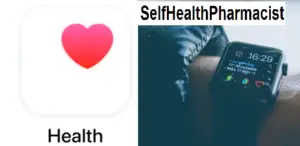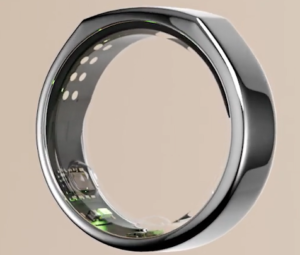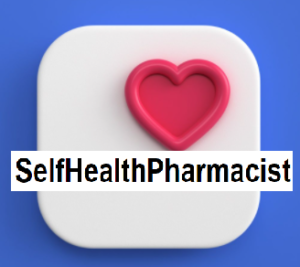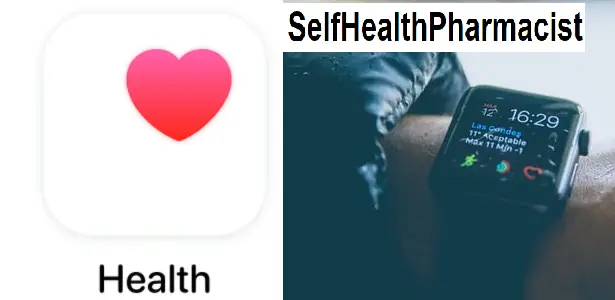During the coronavirus epidemic, pulse oximeters have become as commonplace as thermometers, and are located on the shelves of many doctors’ offices.
But What pulse oximeters work with Apple Health?
No time to read a whole review? This is my Top Picks of Pulse Oximeters for Apple Health
Apple Watch Series 6
and Oura Ring Gen 3 are Good Pulse Oximeters for Apple Health, they have become the choice of modern people who carefully monitor their health. Previous two models are modern and sophisticated types of pulse oximeters that have various additional functions.
They are also actively used by therapists to prevent diseases. They are also used by athletes who want their workouts to be productive and normal people like most of us.
Table of Contents
How Pulse Oximeters for Apple Health work?
These inexpensive and non-invasive electronic devices use LEDs and photodiodes to measure the absorption of light by red blood cells.
Oxygenated cells absorb more infrared light than red, and cells without oxygen do the opposite. Armed with this information, the algorithms can calculate the level of oxygen saturation in the blood.
For most people, this figure should be well above 90%. In the case of coronavirus, it falls into the region of 80 something. Therefore, it seemed like a good idea to have such a device at hand if, of course, it is possible to find the right one.
Today I would make a review of Best Pulse Oximeter for Apple Health.
Should You Trust Apple’s Blood Oxygen Saturation Sensor?
Did manufactures make a good pulse oximeter for Apple Health? It’s difficult to say.
Before choosing a pulse oximeter always pay attention to its accuracy.
It is quite easy to make a pulse oximeter, this is the level of an engineering student, but it is very difficult to make a device that is reliable for clinical use.

In addition to the challenges of adjusting to different skin colors, working in motion, and other design challenges that all pulse oximeters face, the level of difficulty increases when sensors are placed on top of the wrist. Devices used in hospitals or sold in pharmacies are usually attached to the end of the finger, or sometimes to the earlobe.
These parts of the body have advantages over the wrist because they have more capillaries and better signal-to-noise ratio.
Do all Pulse Oximeters work with mobile applications?
Unfortunately, not all pulse oximeters work with mobile applications.
Only modern devices can be connected and synchronized with the applications.
Applications are currently available on the App Store for iPhone and iPad users or Play Market Store for Samsung Users.
For this you need to download the app of a Pulse Oximeter, you need to launch the App Store or Play Market on your device and search for it
Each pulse oximeter has its own applications, there you can check your blood oxygenation level (SpO2) and heart rate. There are a wide range of settings, such as running, hiking, between workouts, and a number of other activities you can choose and later control your measurements.
For example, the Wellue O2 ring has a feature of sharing the reports of measurements with the doctors and this smart ring has a built-in vibration alert system for changes in blood oxygen levels and heart rate for user feedback. Noise-free, only wakes you when needed. Protect your partner’s dream.

What is Apple Health and Is the Apple Health app good?
The Apple Health app is a good and useful tool.
The advantage of Apple Health is that it works well with Apple’s own apps, such as Fitness, Pulse Oximeters, Sleep, and ECG, and it can support many third-party applications.
Best Pulse Oximeter for Apple Health
The pandemic has been underway for more than half a year, so it’s no surprise that consumer electronics manufacturers are touting the benefits of adding pulse oximeters to wearable electronics.
The sensors cost little, don’t consume much battery, and may attract some customers who want a sense of security in our uncertain world.
Few people know, but many branded smartwatch companies can measure the level of oxygen in the blood by emitting light waves of two spectra: red and infrared.
This technique is based on the ability of hemoglobin (the protein that carries oxygen) to absorb light differently depending on the degree of oxygen saturation. Simply put, the darker the blood, the more oxygen it contains and vice versa.
1.Apple Watch Series 6
Recently, Apple also decided to add a pulse oximeter to its watch (Fitbit and Garmin had similar products even before the pandemic, it was supposed to recognize sleep apnea).
It was announced that the Apple Watch Series 6 uses four groups of green, red and infrared LEDs, as well as four photodiodes.
The company promises a specialized advanced algorithm that determines the level of oxygen saturation in the blood. The red and infrared LEDs are busy measuring saturation; green ones measure the pulse. The sensors are mounted on the back of the watch and touch the top of the wrist. They can be used to receive data on demand during the day, and automatically at night.
Apple advertises its gadget as a “fitness and health” device. In other words, the company does not have permission from the US Food and Drug Administration (FDA) to advertise the device as medical. This is not surprising – it takes time to obtain such permission – but without it it is difficult to understand how accurately the device works.
Personal Experience of Apple Watch Series 6
Sometimes the new Apple Watch Series 6 reports that my lungs and heart are the epitome of health, pumping blood that is 100% oxygenated.
On other occasions, he reports that my blood oxygen levels are so low that I may be suffering from emphysema. Over the course of a few days comparing the Apple Watch to my FDA-approved finger oximeter, I found that Apple Watch readings were most often 2-3% off.
Sometimes the measurements are the same, and sometimes the deviation is 7%.
Some problems may be related to the strap. If the strap is tightened more tightly, then the error can be reduced, but the strap will leave marks on the user’s hand.
It is worth noting that the Apple Watch Series 6 pulse oximeter is not officially intended for medical use.
Apparently, Apple wants to get the status of a health device for its Apple Watch, not wellness, and therefore it takes so long to get certified, apparently negotiating with regulator experts about recognizing the admissibility of its own oxygen measurement technique.
In any case, I personally see no other reason not to put on sale a watch that, from a technical point of view, can already measure the level of saturation in the blood and thereby save the lives of users.
2.Oura Ring Gen 3. Personal Experience
Oura Ring 3 is a smart pulse oximeter ring that is available today. Why is the device so good and why in some scenarios its capabilities surpass the Apple Watch?
Oura Ring Gen 3 can be easily connected to Apple Health.

You won’t surprise anyone with smart watches with an oxygen sensor anymore: many manufacturers produce smart wearable devices and they are all quite similar.
But smart rings with oxygen sensors, as for me, are still a curiosity, although the manufacturer Oura has already introduced the third generation of smart rings.
I tested the new product for several days and am ready to share my impressions and experience of using Oura Ring 3.
I used the ring for several days (about a week) and during these days I realized that I like it even more than the Apple Watch.
Apart from an accurate oxygen sensor, the application has an “Explore” tab, where practices and meditations are collected. This is very cool, because you do not have to go far to look for and download a separate application. Just choose the right one and start meditation.
Oura is improving and adding blood oxygen tracking, which will be supported in the third version of the smart ring in 2022.
Pros of Oura Ring 3:
– Very compact
– Does not distract with notifications that it is time to walk and close the rings
– Very accurate sleep tracking
— Body temperature sensor
– Application with meditations
– The goal of daily activity is selected taking into account how you rested at night
– Tracks workouts well
— Convenient charts with transcripts
– Holds a charge for up to a week
You always have access not only to the data, but also advice on how to improve it. Also, I know that Oura wants to push this feature further early next year. It is very interesting what else they can add there, because if we compare the same AW and Oura Ring 3 in terms of sleep tracking, this is”earth and sky”.

Final Words of Best Pulse Oximeters for Apple Health
Good Pulse Oximeters for Apple Health become the choice of modern people who carefully monitor their health. Previous two models are modern and sophisticated types of pulse oximeters that have various additional functions.
They are also actively used by therapists to prevent diseases. They are also used by athletes who want their workouts to be productive and normal people like most of us.
FAQ
Best pulse oximeter with app?
Good Pulse Oximeters with apps are WellueO 2 Ring, Oura Ring Gen 3,Sleep U.
Can I check my blood oxygen level on my iPhone?
Samsung: To measure your blood saturation using your smartphone, open the Samsung Health app or download the Pulse Oximeter – Beat & Oxygen app from the Play Store. Open the application, and find the item “Stress”. Press the Measure button, put your finger on the sensor.
IPhone: Place the tip of your index finger on the iPhone’s camera lens. After a few seconds, the heart rate and oxygen saturation levels will appear on the phone screen.
How can I check my oxygen level without an oximeter?
- Take a deep breath.
- Hold your breath.
- Count the time for 30 seconds.
Perfectly healthy lungs will pass this test. Based on the calculations, you can approximately determine the level of oxygen saturation:
- 30 seconds – the norm is 95-98%
- 10 seconds – reduced rate of 93-94%
- 7 seconds – extremely low level at 90%
If there is a lack of oxygen, you should consult a doctor for help, with concomitant symptoms of coronavirus, call a doctor at home.
Another way to find out the level of oxygen saturation in the blood is to take a blood test at the clinic.


